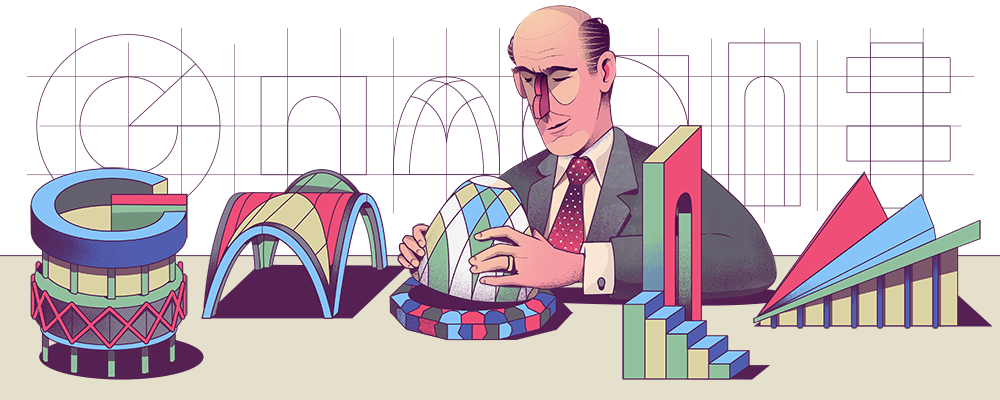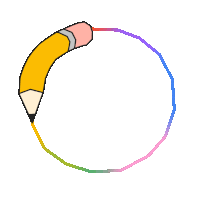
Nov 19, 2022
Celebrating Enrique de la Mora
This Doodle’s Key Themes
Today’s Doodle celebrates Enrique de la Mora y Palomar, a Mexican architect who shaped the image of contemporary cities in Mexico, and was illustrated by Mexico-based artist Julian Ardila. De la Mora experimented with hyperbolic paraboloid shell roofs, also known as saddle roofs, to create structurally efficient buildings with a modern aesthetic. On this day in 1946, Enrique de la Mora received the Premio Educación Pública award from the Administrative Commission of the National Prize for Arts and Sciences for his Purísima Concepción Parish design.
De la Mora was born on November 19, 1907 in Guadalajara, a city in Western Mexico. His father, Manuel de la Mora y del Castillo Negrete, was a prominent engineer and architect.
Following his father’s footsteps, the young De la Mora attended the National School of Architecture and graduated in 1933. A year later, he launched his career by designing the El Puerto de Liverpool department store in Mexico City.
De la Mora went on to design more than 100 architectural projects over the next two decades, including major university buildings and churches. His building designs focused on optimizing structures with symmetrical curves such as hyperbolas, parabolas, vaults and arches.
His most notable work was Iglesia La Purísima, the first Mexican church with a modern architectural design. The structural innovation behind the church’s parabolic vaulted ceilings won him a National Architecture Award in 1946.
His other major works include the master plan for the Monterrey Institute of Technology, the Mexican Stock Exchange, and the School of Philosophy and Literature (Facultad de Filosofía y Letras) at the National Autonomous University of Mexico which later became a UNESCO World Heritage site.
Today, De la Mora is remembered as an important figure in the structural expressionism movement. We can find his exceptional work and influence across major Mexican cities.
Q&A with guest artist Julian Ardila
Today’s Doodle was illustrated by Mexico-based guest artist Julian Ardila. Below, he shares his thoughts behind the making of this Doodle:
Q. Why was this topic meaningful to you personally?
A: It is significant for the work of Enrique de la Mora and his contribution to architecture, being an urban reference since his buildings are part of the modern heritage of Mexican architecture and thought.
Q. What were your first thoughts when you were approached about working on this Doodle?
A: I imagined small models inspired by Enrique de la Mora’s architectural works and how they interacted with him.
Q. Did you draw inspiration from anything in particular for this Doodle?
A: The inspiration arises from Enrique de la Mora’s own work, in which he shows an interest in experimenting with various structural possibilities. These structures are reflected in the composition: shapes and volumes of ecclesiastical architecture from modern Mexico.
Q. What message do you hope people take away from your Doodle?
A: I hope people remember one of the great pioneers of contemporary Mexican architecture, and how his shapes and volumes continue to inspire the world of design.
Where this Doodle appeared
Discover more Doodles by color
Did you know?
The very first Doodle launched as an “out of office” message of sorts when company founders Larry and Sergey went on vacation.
Learn MoreDid you know?
The first Doodle launched in 1998, before Google was officially incorporated.
Learn MoreDid you know?
The first same day Doodle was created in 2009 when water was discovered on the moon.
Learn MoreDid you know?
Doodle for Google student contest winners have gone on to become professional artists
Learn MoreDid you know?
The time it takes from sketch to launch for a Doodle varies widely: some have taken years and others just a few hours!
Learn MoreDid you know?
Hundreds of Doodles launch around the world every year. Often, several different ones are live in different places at the same time!
Learn MoreDid you know?
Our most frequently recurring Doodle character is Momo the Cat - named after a real-life team pet!
Learn More